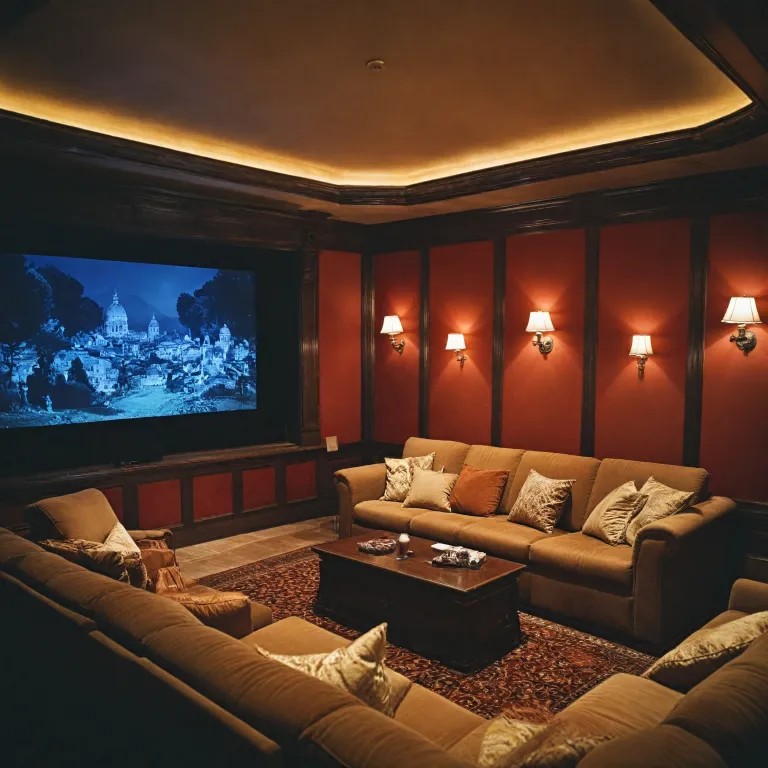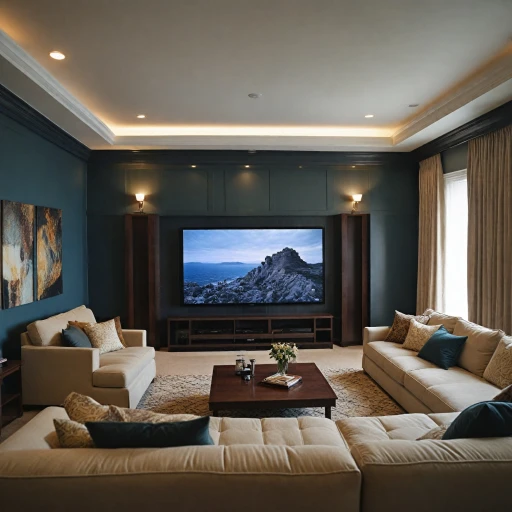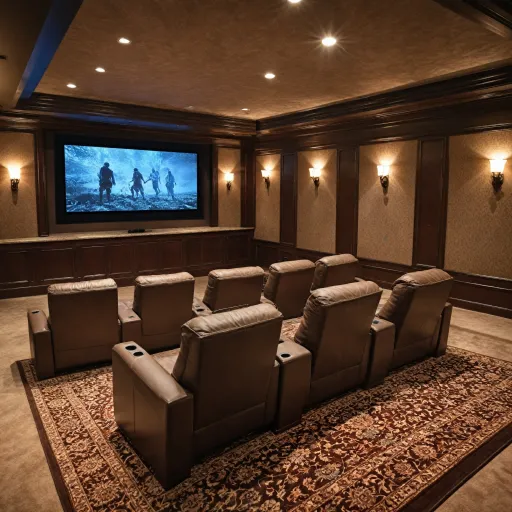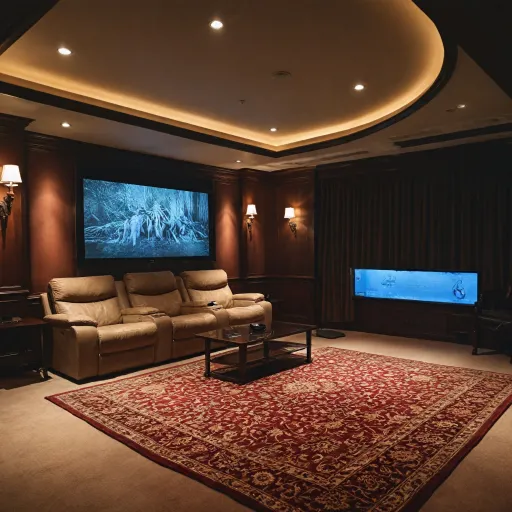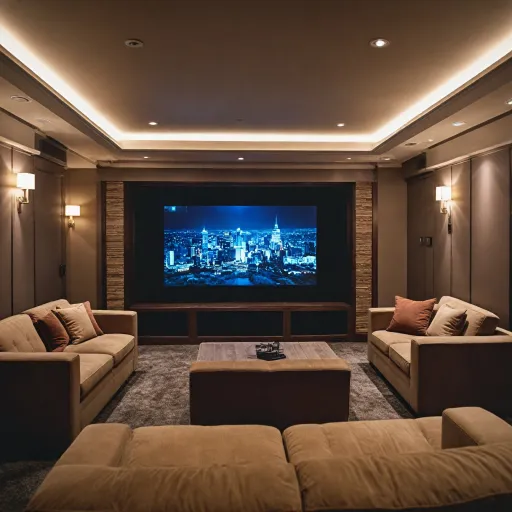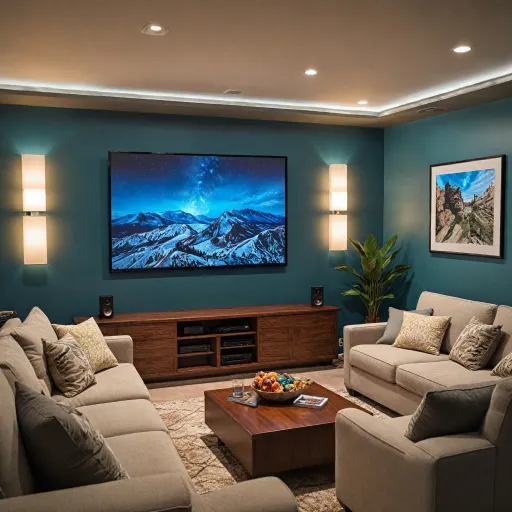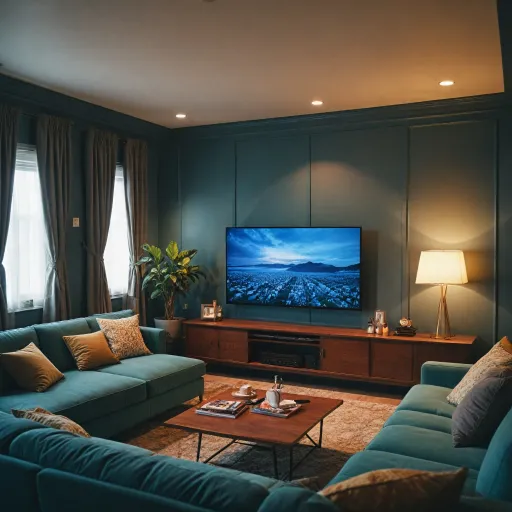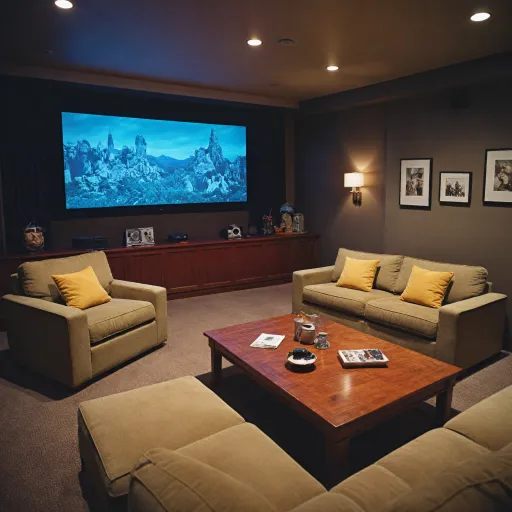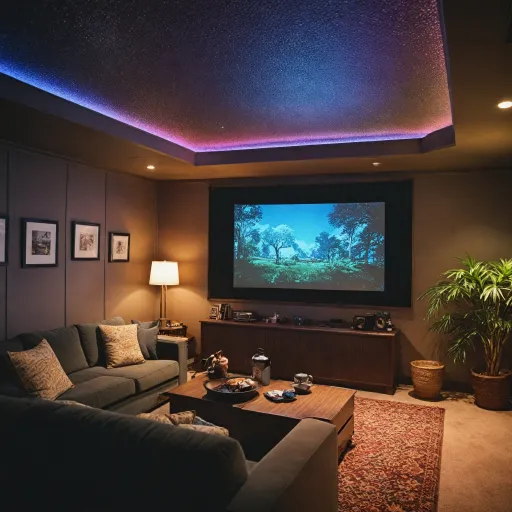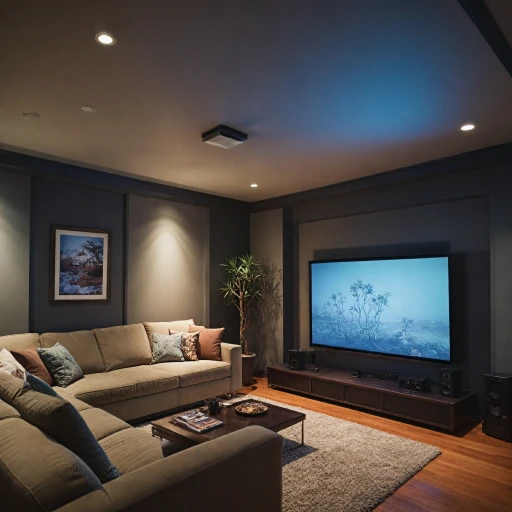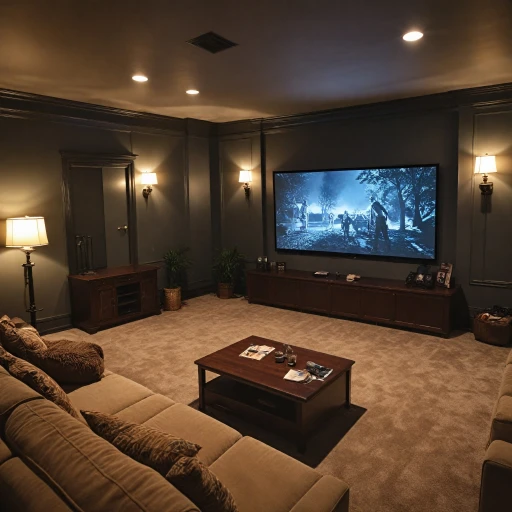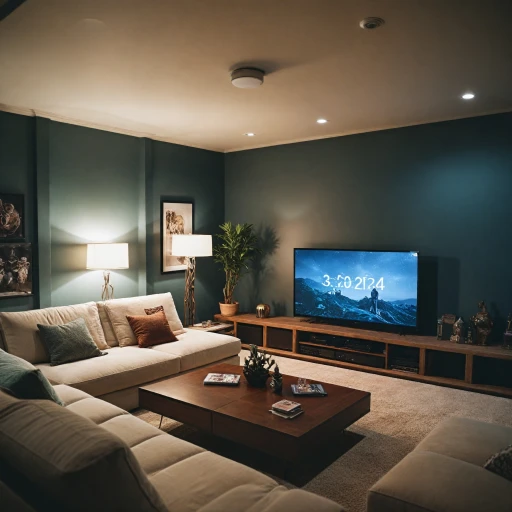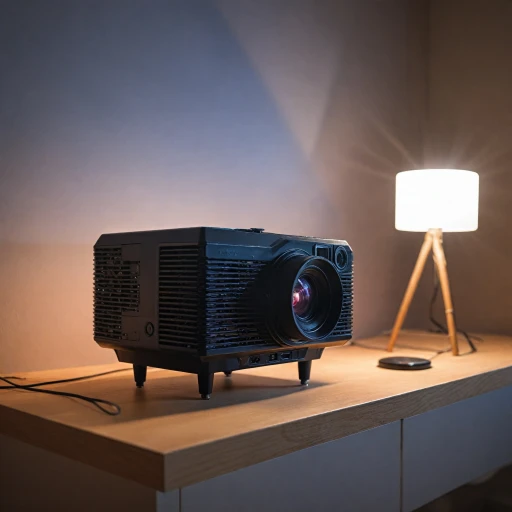
Understanding Home Theater Projectors
The Heart of the Home Theater Experience
When building a home theater, the projector is often seen as the centerpiece, providing the crucial visual experience. Known for transforming a regular living room into a captivating home cinema, projectors bring films, sports, and games to life on a big screen, delivering that sought-after theater vibe.
Diving into the Technical Aspects
Projectors are designed to handle both high definition and 4K content, offering crisp images and vibrant colors that make every viewing session enjoyable. They can outshine traditional televisions in terms of screen size, with capabilities to project images over 100 inches, creating a truly immersive experience. While exploring your options, it's beneficial to consider wireless home cinema solutions that enhance flexibility and ease of setup.
Key Considerations
Choosing the best home theater projector involves more than just image quality. Here are some key factors to consider:
- Resolution: Opt for a high definition or 4K projector for superior picture quality.
- Brightness: Measured in lumens, the brightness of a projector impacts how well it will perform in different lighting conditions.
- Contrast Ratio: A high contrast ratio will enhance picture depth, providing a better viewing experience.
- Portability: Consider models that are easy to set up and align with your home audio systems.
Each of these elements plays a vital role in the overall quality of your home theater setup. Integrated with a quality sound system, like surround sound or a Dolby Atmos configuration, your projector can be the gateway to an exceptional home theater experience, rivaling that of any commercial theater.
Choosing the Right Projector for Your Space
Assessing Your Space for the Ideal Projector
Choosing the right projector for your home theater is crucial to achieving the best viewing experience. The first step is to evaluate the room where you plan to set up your theater system. Consider the size, shape, and lighting conditions of the room. A larger space might require a projector with higher lumens to ensure a bright and clear image, even in ambient light. Conversely, a smaller, darker room can benefit from a projector with lower lumens, which can still deliver high-quality visuals without overwhelming brightness.
Resolution and Image Quality
When selecting a projector, resolution is a key factor. For a truly immersive experience, opt for a projector that supports high definition or even 4K resolution. This ensures that your home cinema delivers crisp and detailed images, enhancing your viewing experience. Additionally, consider projectors that support HDR (High Dynamic Range) for richer colors and better contrast.
Connectivity and Compatibility
Modern projectors come with various connectivity options, which are essential for integrating with your existing home audio and video systems. Ensure the projector has multiple HDMI ports to connect to your Blu-ray player, gaming consoles, and other devices. If you have a smart home setup, look for projectors that offer wireless connectivity options, allowing seamless integration with your smart speaker system and other smart devices.
Sound Considerations
While projectors often come with built-in speakers, they typically don't match the quality of a dedicated sound system. For the best home theater experience, consider investing in a surround sound system. A setup with a center channel speaker and additional speakers strategically placed around the room can significantly enhance the audio quality. This setup will complement your projector, providing a complete audio-visual experience.
For more tips on enhancing your viewing experience, you can explore wireless home cinema solutions that integrate seamlessly with your projector setup.
Projector Screen Options and Their Impact
Evaluating Projector Screen Options for Superior Image Clarity
A high-quality projector screen can significantly enhance the overall viewing experience in your theatre setup. Selecting the right screen is crucial to achieving vibrant colors and sharp details in your home cinema room. Here's what you should consider:- Size and Aspect Ratio: Ensure that your screen size is appropriate for the room dimensions and matches the aspect ratio of your projector. Common aspect ratios include 16:9 for HD and 4K blu ray content, while 2.35:1 is often chosen for cinematic experiences.
- Material: The screen material affects image and sound quality. Acoustic screens will allow sound from behind the screen to pass through, essential for center channel speakers. Gain level, which ranges from 1.0 to 2.0, influences brightness and should be chosen based on ambient light and projector brightness.
- Fixed vs. Retractable: A fixed screen offers a taut surface for enhanced picture clarity but requires a permanent setup in your living room. Retractable screens provide flexibility and are ideal for multi-use rooms.
- Color and Finish: For a traditional home theater environment with controlled lighting, a white matte finish is often best. Grey screens are better for rooms with ambient light, enhancing contrast without compromising brightness.
Optimizing Audio for a Complete Experience
Creating a Soundscape That Complements Your Visuals
Crafting an immersive home theater experience goes beyond just visual elements. The integration of a high-quality audio system is crucial to ensure that the sound is as captivating as the images on the screen. To achieve a theater-like ambiance in your living room, consider the following audio components and arrangements.
- Choosing the Best Home Audio Setup: Opt for a surround sound system with multiple channels to bring the audio to life. A 5.1 or 7.1 speaker system can offer an enveloping sound field, providing depth and realism.
- Optimal Speaker Placement: Proper placement of speakers around the room is essential for a balanced sound stage. Consider positioning the front speakers at ear level and ensure the center channel is aligned with the projector screen for the best audio experience.
- Integrating a Quality Receiver: A high-quality receiver acts as the hub of your sound system, distributing sound to the respective speakers and allowing for seamless connectivity with other components such as blu ray players or smart home devices.
- Dolby Atmos and 3D Sound: Incorporating Dolby Atmos technology can elevate your home theater system by adding height to the audio soundscape. This multi-dimensional technology provides a more immersive and natural listening experience.
Investing in top-notch speakers and a sound system that complements your visual setup will significantly enhance your home theater experience. Choose systems with consistently high reviews, focus on future-proofing with smart technology, and don't forget the essential hdmi cables for connectivity. This alignment ensures that every movie or game unfolds with cinematic sound quality that meets or exceeds expectations.
Integrating Smart Technology
Embracing Technology for an Enriched Viewing Experience
In the quest for the best home theater setup, the integration of smart technology can significantly elevate your home cinema experience. This addition not only enhances the visual appeal with high-definition projection but also refines sound quality and overall convenience. First and foremost, consider incorporating smart speakers and sound systems. A smart home equipped with voice-controlled devices makes it easier to adjust volume or switch channels as you immerse yourself in a captivating movie. Leading reviews suggest smart speakers now have enhanced audio capabilities, rivaling traditional speaker systems. It's essential to ensure that your smart sound system supports surround sound formats like Dolby Atmos, providing a spatial quality that enhances the impact of your living room theater. A high-quality receiver that allows seamless connection with HDMI cables is critical for optimal performance. When selecting a smart home theater system, evaluate its compatibility with various devices such as smartphones or tablets. This flexibility means controlling your entire theater experience, from the projector screen settings to the speaker alignment, can be done from the palm of your hand. Additionally, consider a smart projector that adapts to various inputs and can be remotely controlled to tweak the display settings for the best home experience. This cuts down the need to awkwardly adjust settings each time with manual controls. Smart technology extends to video components as well. Blu-ray players that connect seamlessly within a smart home framework can enrich quality and offer high-definition clarity for cinematic enjoyment. Investing in a smart center channel speaker and a matching speaker system heightens audio delivery, ensuring that dialogue is crisp and synchronized with action sequences on the screen. Opt for a smart living room arrangement where every tech component integrates effortlessly, optimizing both space and your audio-visual experience. Remember, whether it's through projectors or audio systems, enhancing your home theater with smart technology can bring the ultimate cinematic vibe straight to your living room.Maintenance and Troubleshooting Tips
Keeping Your System Running Smoothly
Maintaining a top-notch home theater experience involves proper upkeep of all components, from your projector to the audio equipment. Here are some tried-and-true practices to ensure your theater setup continues delivering high-quality results:
- Regular Cleaning: The projector, screen, and speakers need occasional cleaning to prevent dust accumulation, which can affect performance. Use a microfiber cloth and appropriate cleaning solutions for delicate surfaces.
- Projector Maintenance: Check the projector’s air filters and lamp. Clean or replace them as necessary to prevent overheating and maintain brightness levels. Consult your projector’s manual for specific guidance.
- Cable Management: Organize HDMI cables and other connections neatly to prevent signal disruptions and maintain aesthetic appeal. This also makes troubleshooting easier.
- Update Software: For smart home theater systems, keep software and firmware up-to-date to leverage the latest features and security updates. This applies to devices such as projectors with smart capabilities, receivers, and smart speakers.
- Tackling Audio Issues: If your surround sound system isn't providing its best performance, recalibrate your speakers. Utilize your receiver's setup microphone—or manually set each speaker channel. Ensure speaker placement reflects the optimal layout discussed previously for the best home audio experience.
- Monitor Environmental Factors: Ensure your home theater room has proper ventilation and temperature control to prevent equipment overheating, which can affect both the projector and sound system quality.
Troubleshooting common issues, such as pairing problems with the smart speaker or audio lag with the blu-ray player, involves checking connection settings and firmware versions. Reviews from fellow home theater enthusiasts can offer insight into resolving persistent problems.
